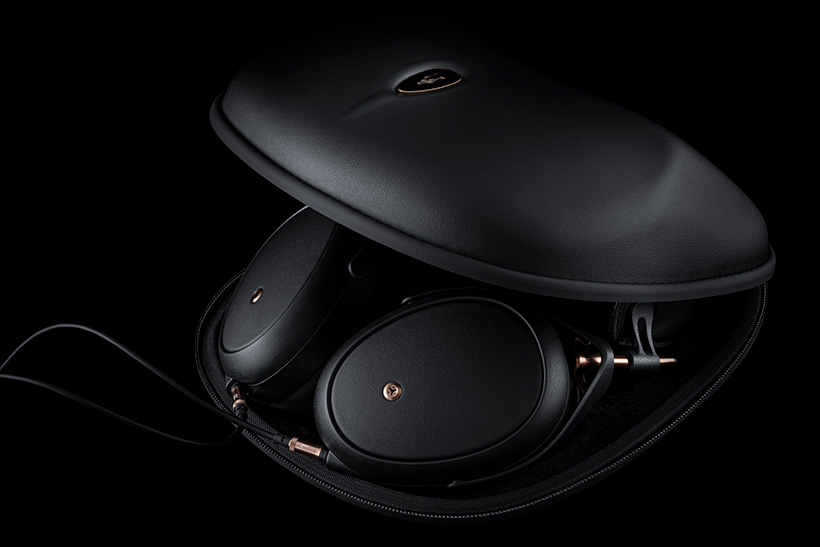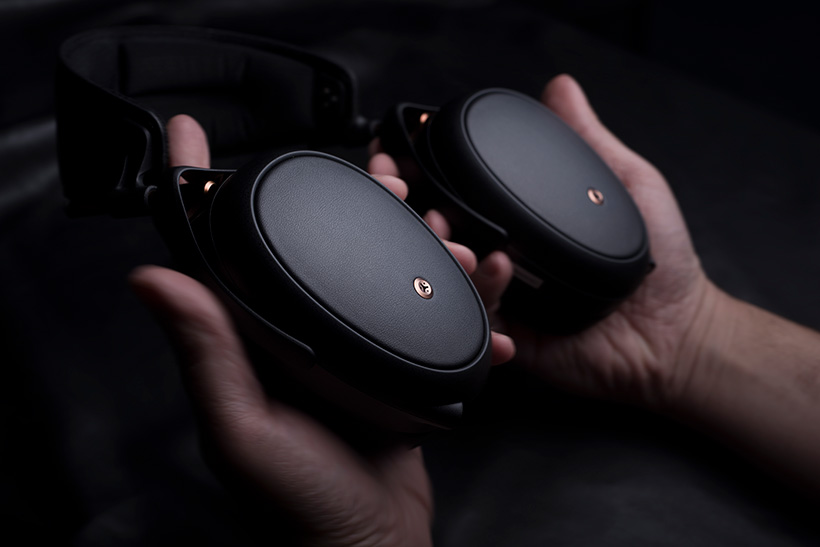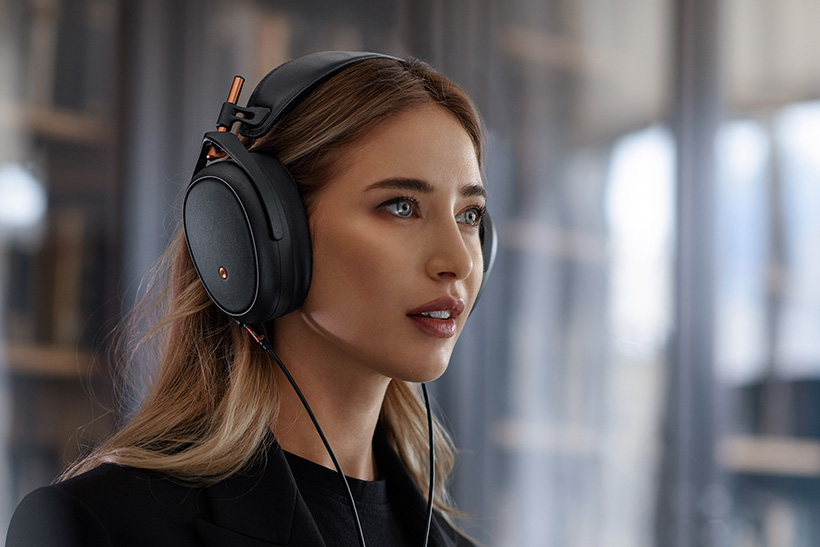This review has been a little emotional for reasons other than musical. Although Meze is a Romanian company, Rinaro Isodynamics, their drive-unit partner, is based in Lviv, Ukraine. I am informed by the distributor that they have not been attacked so far, I pray this remains the case as events are developing quickly. Rinaro Isodynamics design and manufacture the drive units for the Liric and also Meze’s top of the range Empyrean and Elite headphones. The company began as a state-funded project back in 1985, pioneering planar magnetic drivers whilst Ukraine was still part of the USSR. They have subsequently added the design of loudspeakers and drivers for both in-car and headphones to their portfolio .
Meze was founded in 2011 by Antonio Meze, their first big hits were the Meze 99 models launched in 2015. That range was, and still is, considered a reference at its price point. The Liric is the most expensive of Meze’s closed-back, over-ear models. While being described as a portable headphone it’s a non-folding design that is supplied in a substantial case, so the term transportable seems more appropriate. The carrying case arrived in a second, very elaborate wooden case, which buyers, of what at £1,799, is a substantial purchase, will feel adds to the sense of luxury and pride of ownership. This feeling of opulence extends to the build quality of the Liric itself where the outer frame of the ear-cup is made from magnesium.

The headphone incorporates what is described as an Isodynamic Hybrid Array driver, a scaled-down version of the driver used in the higher tier Meze models. This term refers to two different shaped parts to the driver, one to optimise lower frequencies and the other for high frequencies. A ‘Switchback Coil’ is placed at the upper part of the driver and is said to be more efficient at reproducing low frequencies, while a ‘Spiral Coil’ for reproducing middle and high frequencies is placed directly over the ear canal. The concept is that this helps reduce time delays and improves image placement, and timing is a particular highlight of the Liric. Closed-back designs are traditionally compromised in terms of stereo image width, something Meze claims to have eliminated with their Phase-X tech.
Two cables are supplied with the Liric (1.5m and 3m), both are terminated with mini-jack connectors but a full sized adapter is also supplied. I found the cables to be particularly immune to the irritating rustling noise, caused by friction, that a lot of headphones suffer from. A cable terminated with a balanced connector is available as an optional extra. They connect at the front of the ear cups, suggesting that the designer expects them to be used with a table-top or rack-based system rather than a portable source, yet a twin jack connector is also provided for air travellers. Sadly the review budget did not run to testing this.

Tipping the scales at a smidgeon under 400g, the Liric feels light and unobtrusive to wear. The leather padding, I think it’s vegan friendly protein leather, is designed to promote airflow and the cups even have small vents. The engineers seem to have got the clamping force just right. When they first arrived I asked my wife to check them out and she commented on how comfortable they were. She liked them so much it was well over an hour before I was able to try them myself. The headband is a tried and tested carry-over from the Meze 99. The slide adjusters are made from anodised aluminium, the finish of which is flawless.
Sound Quality
I have an arsenal of personal music players on hand to try with the Liric, these included the Astell&Kern SP2000T, Chord Poly/Mojo 2 and my own Chord 2Go/Hugo2, I began listening with the Astell&Kern. Immediately it was apparent the Mezes are a class act, presenting a wide soundstage, especially for a closed-back design, with a good, although not outstanding sense of depth. Listening to the DSD version of Stevie Wonder’s Too High from InnervisionsI was enveloped by the glorious textures of the TONTO synth and felt like he was almost singing into my head. However with this source the bass seemed a little loose and lacking in power. Playing the same track from the Chord 2Go/Hugo2 solved the issue with the bass and delivered an improved sense of dynamic drive, albeit at the cost of a slightly dryer and less euphoric presentation. This combination also showed that the Liric was more than capable of presenting a soundstage with a good sense of depth.

Alt-J’s Breezeblocks via both 16/44 WAV CD rip and 24/96 FLAC via Qobuz, on the Chord Poly/Mojo 2 revealed that the Liric is capable of a robust and taut bass delivery. This, along with the cymbal-less drum kit gave the track a strong sense of drive. After failing to engage with any of their later releases, I was reminded of how much I loved the first Alt-J album when it was released yet I had forgotten how good it is. Again, the Liric seemed to lose something when I played it on the Astell&Kern, I put down to a synergy between the Mojo 2 and the Liric, both of which have great timing.
Aldous Harding’s Designer (Qobuz 24/44.1) is an album I keep coming back to. With the Chord 2Go/Hugo2, the Liric allowed me to follow every word (I dare not say lyrics) and the strong, natural tone of the bass guitar underpinning the track. Sticking with female vocals, I migrated to my favourite Joni Mitchell album Blue via a WAV file taken from the HDCD version. The opening track, All I Want, was utterly engaging, the mandolin at the front left of the soundstage, coming to life and rolling back the last 50 plus years. Joni’s voice was delivered with so much emotional power through the following tracks that I played the whole album three times over the next few days.

With obvious irony poor reviews initially put me off purchasing Massive Attack’s 100th Window upon release. I have to say it has since become the most played of their albums in my house. The mix is so dense that I seem to find something new almost every time I play it, but it can sound a little bright with some equipment, including my Hifi-Man Sundara headphones. On the 2Go/Hugo2 it sounded utterly sublime, on the track Butterfly Caught the Liric’s timing abilities shone through and I was surprised to hear digitised vocal lines which had previously eluded me.
Before writing this review I played was EST’s Live In Gothenburg via the Chord Hugo 2. Again, the Liric’s timing properties held my attention, the strong sense of acoustic captured in the recording was revealed and I loved the bass detail and texture. There was not a hint of hardness or glassiness to the piano as the notes danced around inside my head.

There have been times when the Liric sounded somewhat small in scale, especially when listing to big productions. While the bass is extremely well textured and detailed and it stops and starts as fast as with any headphones I have heard, denser productions can lack a little in dynamics compared to bigger open-back phones. But this is a compromise I would be prepared to make for a good closed-back design as I tend to listen at more modest levels than many. Others will have different priorities. The Liric did seem to suit the character of the Chord DACs I partnered it with over the Astell&Kern SP2000T. The latter combination at times sounding a little soft and lacking in dynamics and bass drive. As with all things hi-fi you need to listen with your intended source before committing to a purchase.
Conclusion
In the Liric, Meze and Rinaro Isodynamics have designed and built an extremely high quality and musically insightful headphone. Although it can produce full, detailed and fast bass, it is not a headphone for bassheads. I could easily live with the Liric, especially considering how rare it is to find a closed-back headphone that sounds so natural, insightful and engaging. I am sure the Liric will be another hit for Meze.
My thoughts are with the owners, employees and compatriots of Rinaro Isodynamics, and I am sure I am not alone in this.


